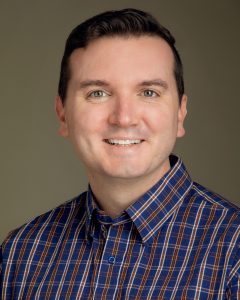When we diagnose a skin cancer, we are often only seeing the “tip of an iceberg” or the “top of a weed.”
Here in Arizona, sun exposure over a lifetime, high altitude, outdoor work and active outdoor lifestyles all add up to a dramatic increase in risk. The most common types of skin cancer we encounter in my clinic are basal cell carcinoma and squamous cell carcinoma. While these skin cancers generally carry a low risk of spreading to lymph nodes and other organs, they will continue to grow endlessly, destroying local tissue and extending into nerves, muscle, and even bone if left untreated.
When we diagnose a skin cancer, we are often only seeing the “tip of an iceberg” or the “top of a weed.” These analogies help convey that the lesion on the surface could be a quite small and inconspicuous bump, but the “roots” of the tumor or the “bulk of the iceberg” extend much more broadly and deeply.
When we perform a biopsy on a lesion, I often tell my patients that the biopsy procedure simply “pulls the top of the weed” but we will need to perform a second procedure to “dig out all the roots.” The second procedure I am referring to, in many instances, is Mohs micrographic surgery.
Mohs micrographic surgery was developed in the 1930s by Dr. Frederic Mohs at the University of Wisconsin and is now practiced throughout the world. Mohs surgery differs from other skin cancer treatments in that it permits the immediate examination of the removed tissue, with visualization of the entire margin or outside edge so that all “roots” and extensions of the cancer can be eliminated.
One of the key features of Mohs surgery is that we examine the margin of the tissue under the microscope with what has been termed an “en face” technique. If one can imagine the removed tissue from a skin procedure as a loaf of bread, the most common type of examination involves cutting slices of tissue in the same manner as you would cut slices of bread for your morning toast.
While this traditional “morning toast” technique is excellent for making a diagnosis of a skin tumor, the downside is that it only allows for a small portion of the margin or “bread crust” to be examined. With Mohs surgery, on the other hand, the entire outer crust of the bread is thinly removed and examined, allowing us to ensure the entire edge is clear of the tumor. This is why Mohs surgery carries the highest cure rate of any skin cancer treatment available. We are able to see 100 percent of the outer edge, ensuring that it is clear of all tumor extensions.
The goal of Mohs surgery is to remove only the amount of tissue needed to clear the tumor, which goes hand in hand with sparing as much of your healthy skin as possible. This means we are able to remove skin cancers with a smaller-sized skin defect than would be needed using other techniques.
Mohs surgeons bring skills and training in dermatology, dermatopathology and advanced skin surgery to the table with each procedure. In addition, the Mohs surgeon must have the required surgical and laboratory facilities and be supported by a well-trained Mohs nursing and histology lab staff. Northern Arizona Dermatology Center is here to help, should you ever need a Mohs procedure. We are also available for general skin cancer screenings and all forms of dermatology care. FBN
By Brendan O’Neill, M.D.
Brendan O’Neill, M.D. completed his undergraduate training at the University of Delaware Honors Program and obtained a degree in Neuroscience. During his undergraduate training, he was named a member of the Phi Beta Kappa national honor society. He went on to complete medical school, dermatology residency, and dermatopathology fellowship at Drexel University College of Medicine in Philadelphia, Pennsylvania. During medical school, Dr. O’Neill was awarded a Doris Duke clinical research fellowship at the University of Texas Southwestern, during which he gained extensive clinical trial and research experience, with a focus on lipodystrophy.
Dr. O’Neill is triple board-certified in dermatology, dermatopathology and Mohs micrographic surgery. He has completed extensive formal training in the histologic interpretation of skin biopsies, and is the laboratory director for our practice. Prior to joining Northern Arizona Dermatology Center, Dr. O’Neill practiced general dermatology in Denver, Colorado and Phoenix, Arizona. He also worked with the largest private pathology group in Arizona in a high-volume dermatopathology laboratory.
Dr. O’Neill is excited to bring both his clinical background and his experience in dermatopathology to northern Arizona. He enjoys medical and surgical dermatology with special interests in melanoma, cutaneous oncology, and inflammatory dermatoses. Dr. O’Neill lives in Flagstaff with his wife and two children. Outside of the clinic, he enjoys hiking, biking, tennis and playing guitar.
For more information, contact:
Northern Arizona Dermatology Center, PC. 1490 N Turquoise Dr, Flagstaff, AZ 86001
928-774-5074





